-
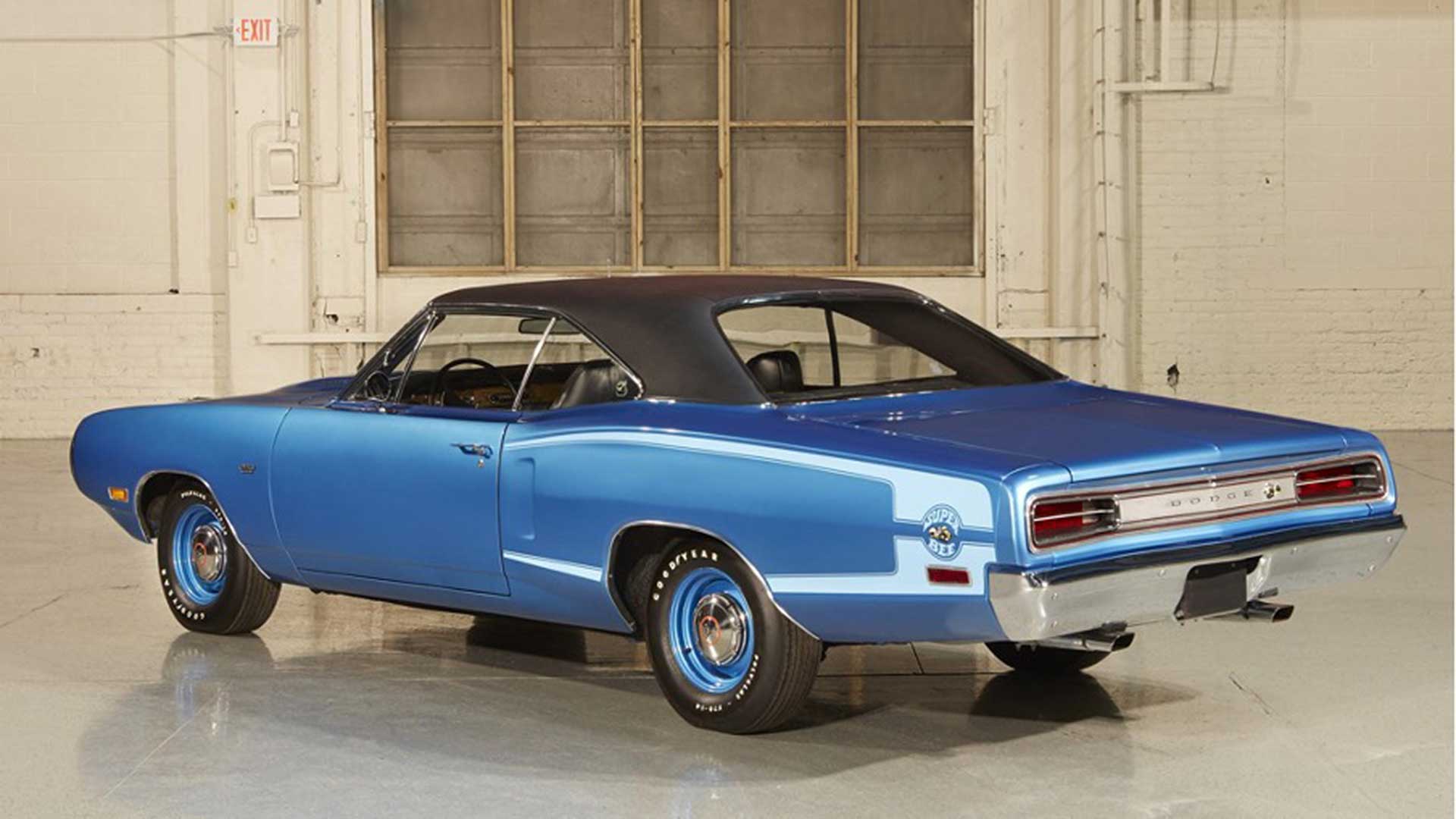
Mighty Muscle
© StellantisThe muscle car era of the 1950s, 60s and 70s saw horsepower explode into unimagined realms. Engine size leapt upward; already past 300, and soon over 400 and even 500 cubic inches. Engineering improved and cars became lighter.
The age of the muscle car also gave a new voice for Dodge. And it all started way back in 1954.
-
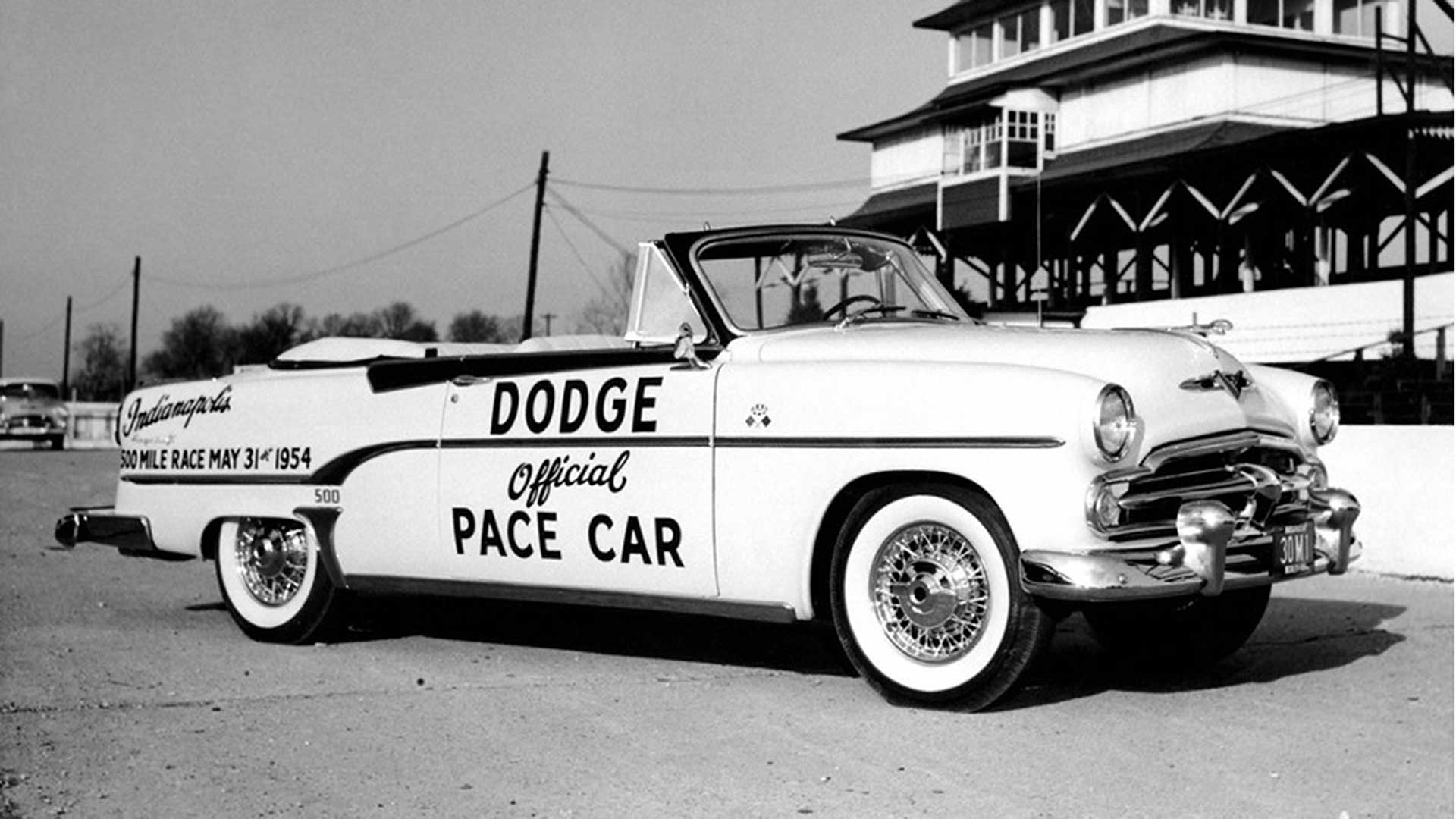
It only looks fast
© StellantisIn 1954, Dodge was chosen for the first time to pace the Indianapolis 500. A Royal Convertible was chosen and decked out in two-tone yellow and black, both inside and out. The Royal came with only one engine: the double-rocker Red Ram V8, providing 150 horsepower from 241 cubic inches. Yes, it was a Hemi.
-
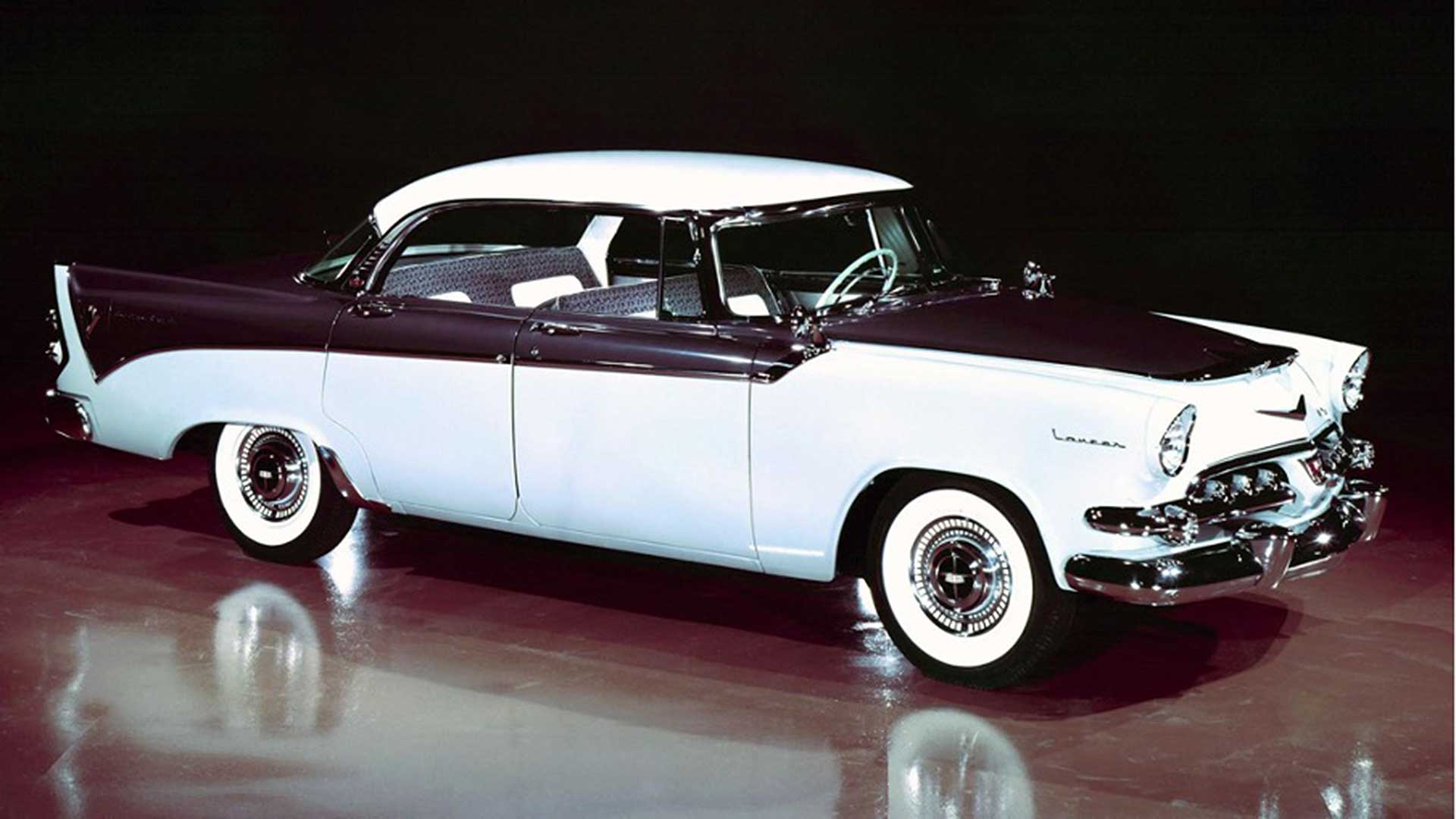
1956 Royal Lancer
© StellantisThe 1956 Dodge Royal Lancer sat at the top of the model range, and was still offered with the D-500 package. This special designation included a 315 cubic-inch V8 with unique pistons, lifters, and rockers, as well a special cam. A four-barrel carb was added, bringing peak horsepower up to 260.
-
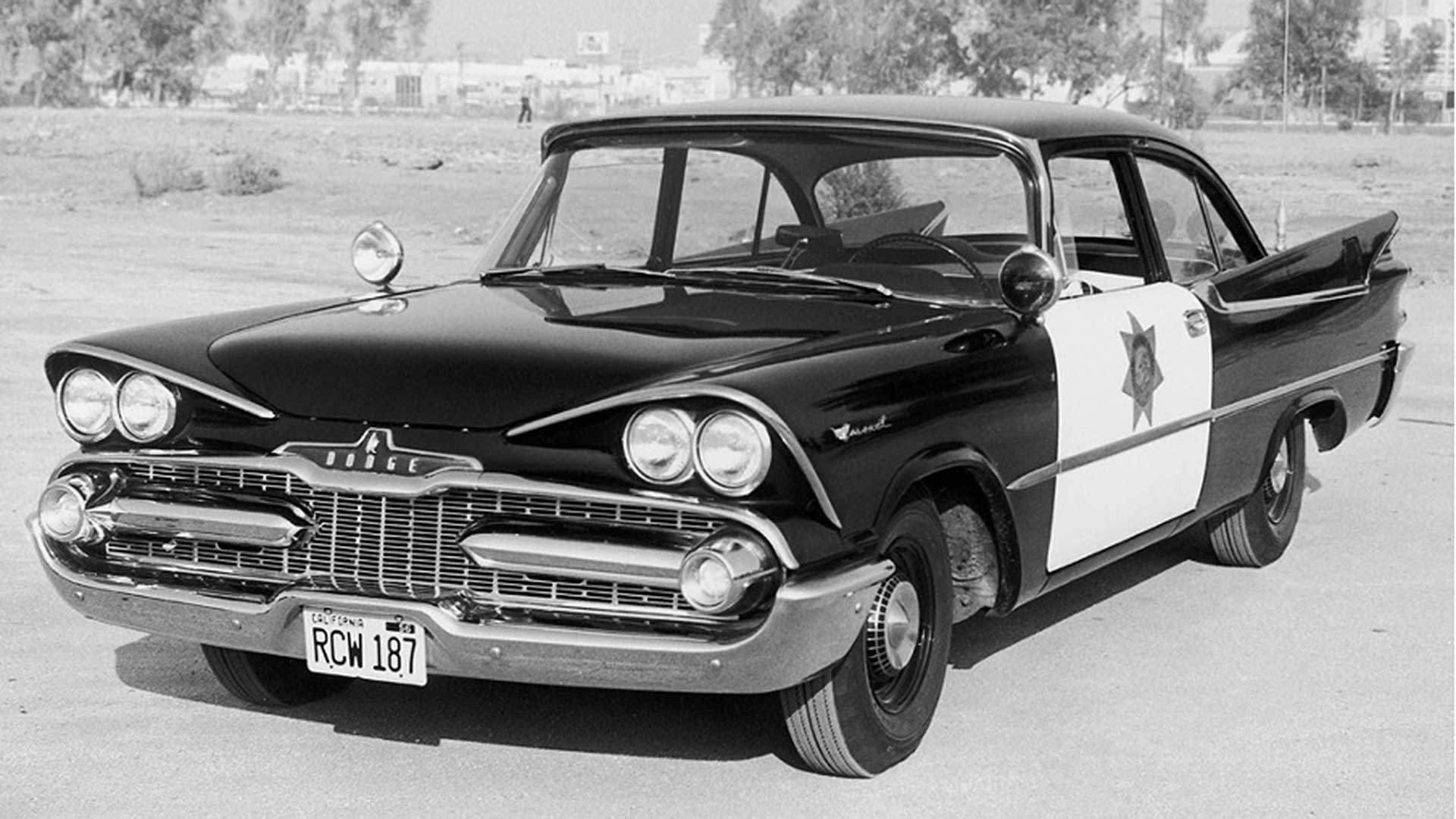
1959 Coronet
© StellantisDodge upped the D-500 game to the D-501 beginning in 1957. As the story goes, the new models had 325 cubic inches and twin four-barrel carbs. They were dubbed D-500-1 and ran at Daytona Speed Week in February. The D-501 was released in March and had 354 cubic inches of Chrysler motor with twin four-barrel carbs. Horsepower was factory rated at 340, and the engine was mated to a heavy-duty commercial transmission.
There was more good stuff under the car, as well: Chrysler torsion bars, Imperial brakes in the rear, and Dodge truck brakes and spindles up front.
Eight to ten D-501 Coronets are believed to have been in use by the Ohio State Patrol as pursuit vehicles.
-
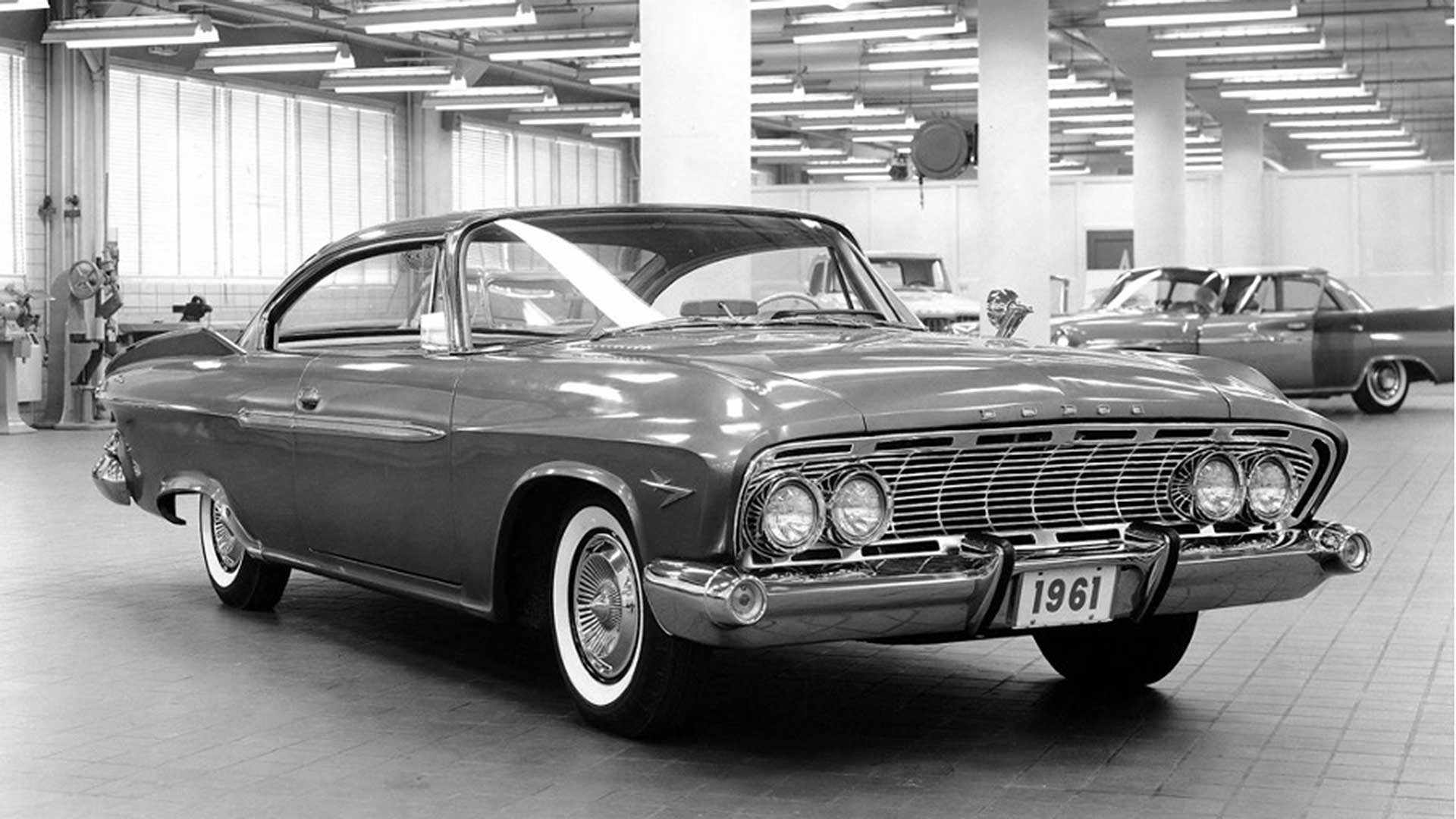
1961 Dart Phoenix
© StellantisThe Dart was the smallest offering from Dodge in 1961 and featured stiff, lightweight, unibody construction. The luxurious Phoenix sat at the top of the trim ladder and included options like seats that swiveled to make getting out easier and the Highway Hi-Fi, an RCA record player than sat in a shock-proof cabinet under the dash
For 1961, a 383 cubic-inch V8 was added to the options list, making 330 horsepower and 460 lb-ft of torque. Twin four-barrels sat atop a cross-ram induction intake manifold.
-
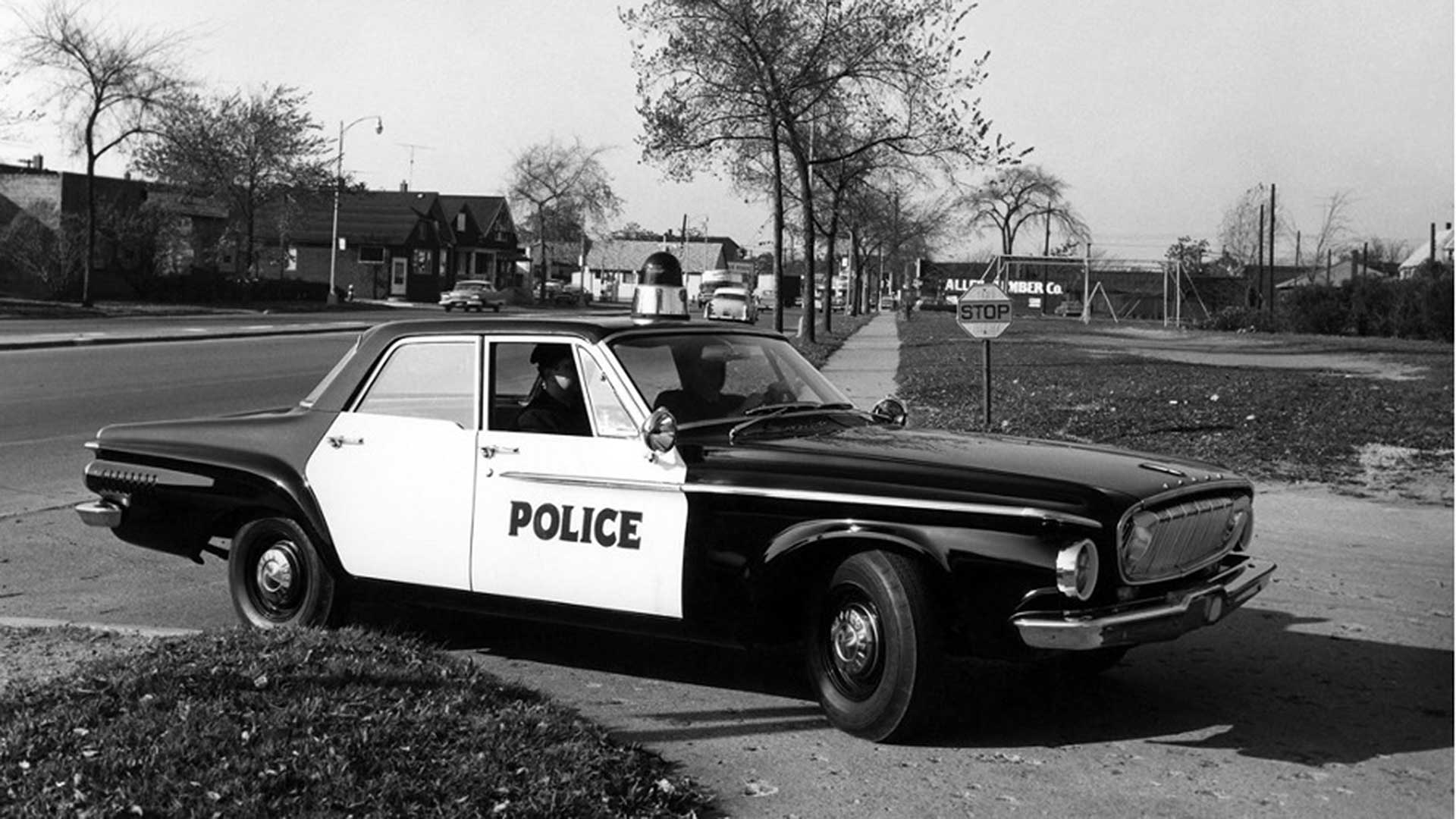
1962 Polara
© StellantisAll Dodges were pared down for 1962. Legend says that management downsized the line when it heard that the Chevrolet would be offering smaller cars for the new model year.
The result was a Polara 300 pounds lighter than its predecessor. A 413 Max Wedge V8 with 415 horsepower was offered, creating a blindingly fast car that was loved by racers and the police alike.
-
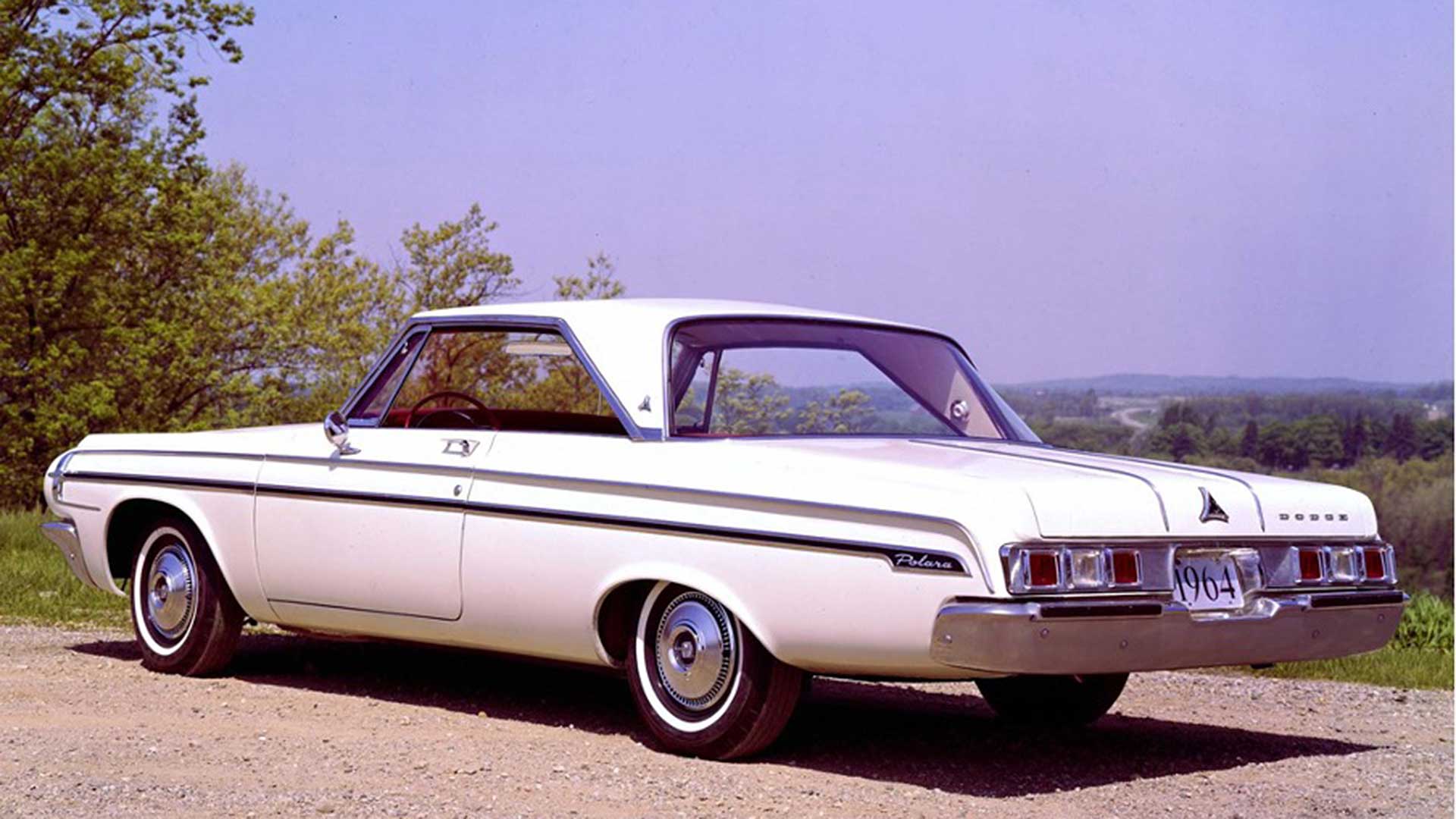
1964 Polara
© StellantisThe 1964 Polara is one of the most beloved Mopars of all time. It still retained the small stature and light weight of the ‘62, but revised styling made it look longer, lower, and wider. A new engine also made its debut this year: the famous 426 Hemi, factory rated at 425 horsepower. Anecdotal evidence puts the actual number closer to 550.
-
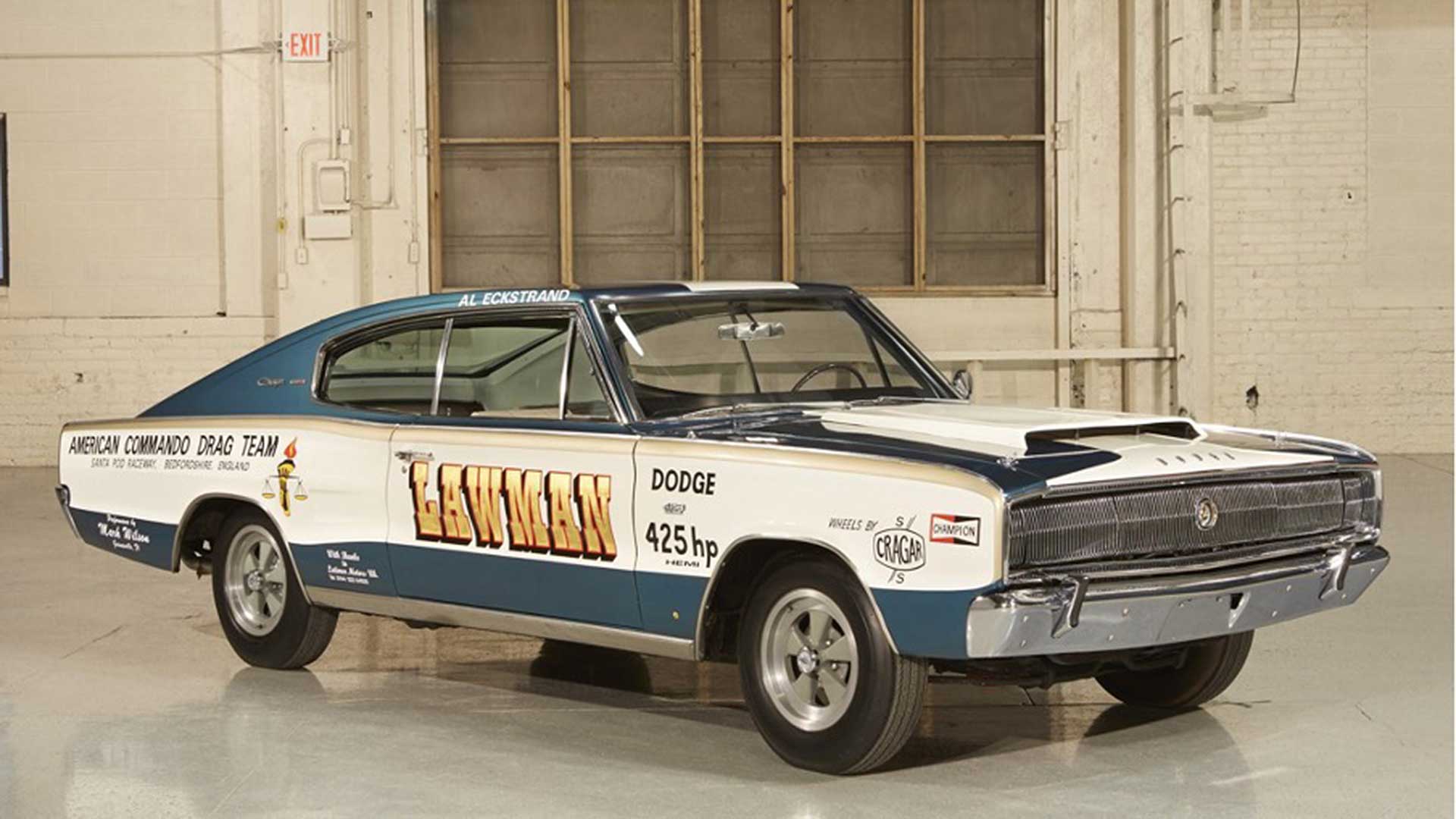
1966 Charger
© StellantisThe Charger was introduced in 1966, basically a fastback version of its Coronet stablemate with unique styling cues. The new Street 426 Hemi lurked under the hood with twin four-barrel carbs and over 400 horsepower and almost 500 lb-ft of torque. The new Charger annihilated any stoplight Johnnies too naive to know what they were challenging.
David Pearson took the 1966 NASCAR Grand National Championship in a Charger, and retired drag racer Al Eckstrom used the famous Lawman Charger shown above in driving demonstrations and safety presentations across military bases in Europe and Asia.
-
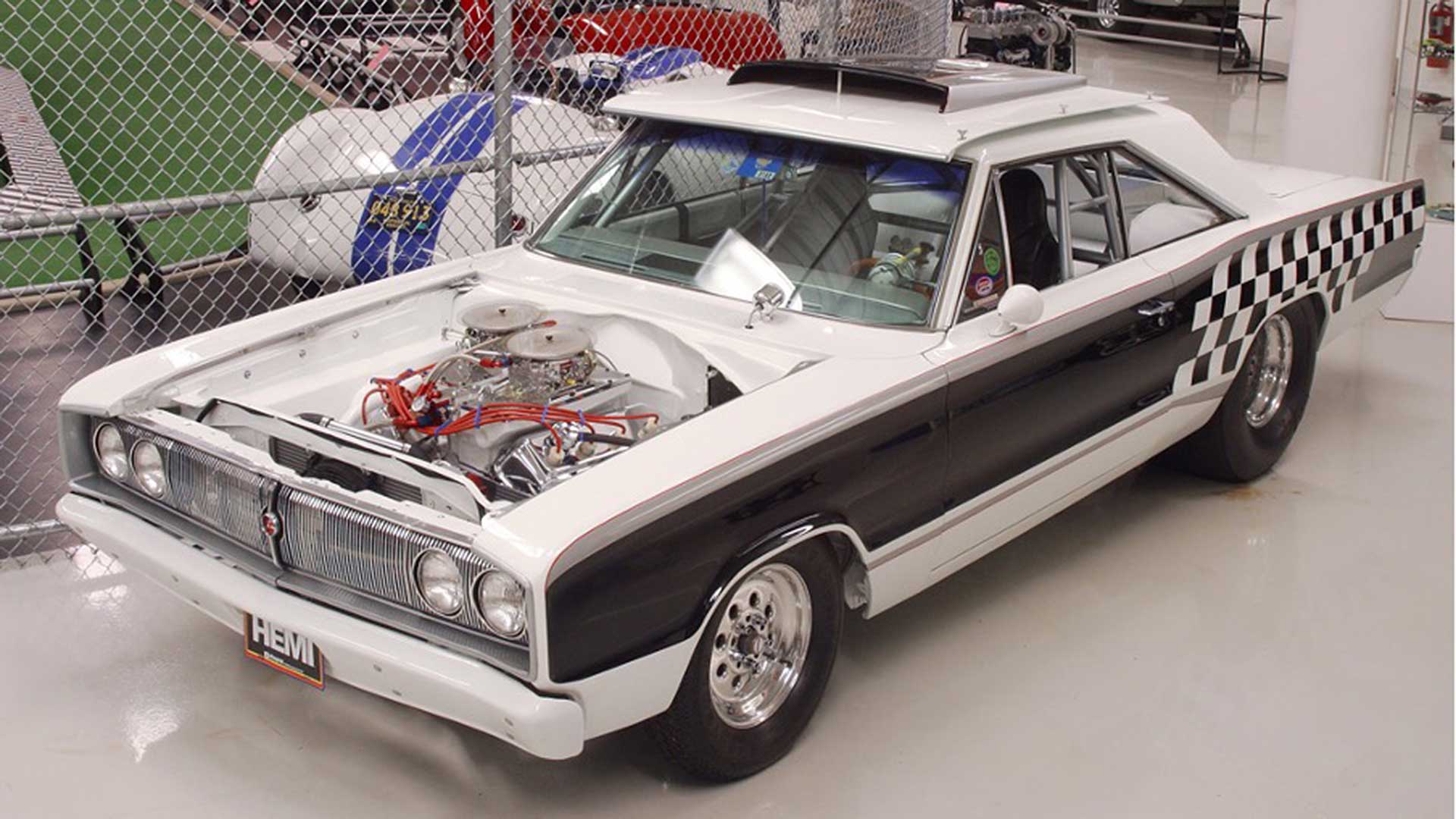
1967 Coronet
© StellantisIn 1967 Dodge debuted the Coronet R/T, for “road and track.” It was a screamer, and handled well thanks to a police-spec suspension. Standard power came from Magnum 440 engine, 440 cubic inches producing 375 horsepower and a pavement crunching 480 lb-ft of torque.
The 426 Street Hemi was available for an additional $457, and produced 425 horsepower and 490 lb-ft. It also downgraded the warranty to 12 months/12,000 miles, and limited it to the original purchaser only.
-
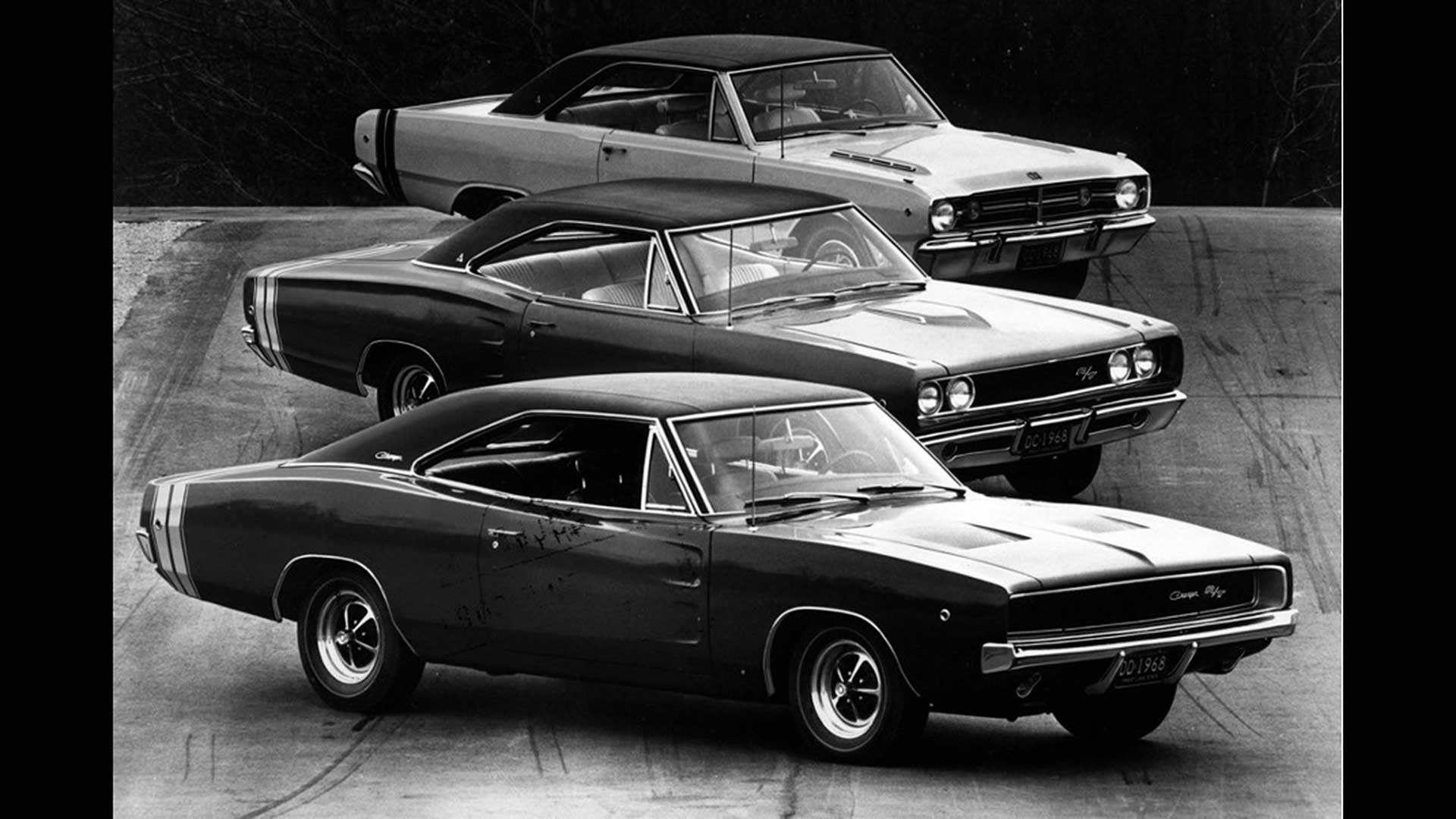
1968 Scat Pack
© StellantisThe Chrysler marketing department and the Ross Roy ad agency introduced a brilliant marketing scheme for 1968: the Scat Pack. Dodge’s performance models—the Charger R/T, Coronet R/T and Dart GTS—were grouped together under one campaign and given twin stripes on the rear quarterpanels, unique decals, and a bee mascot.
A media blitz announced the trio to the world as the “go-mobiles for 1968.” Eight-page inserts in enthusiast magazines urged buyers to get “Dodge Fever” with “the cars with the bumblebee stripes.”
-
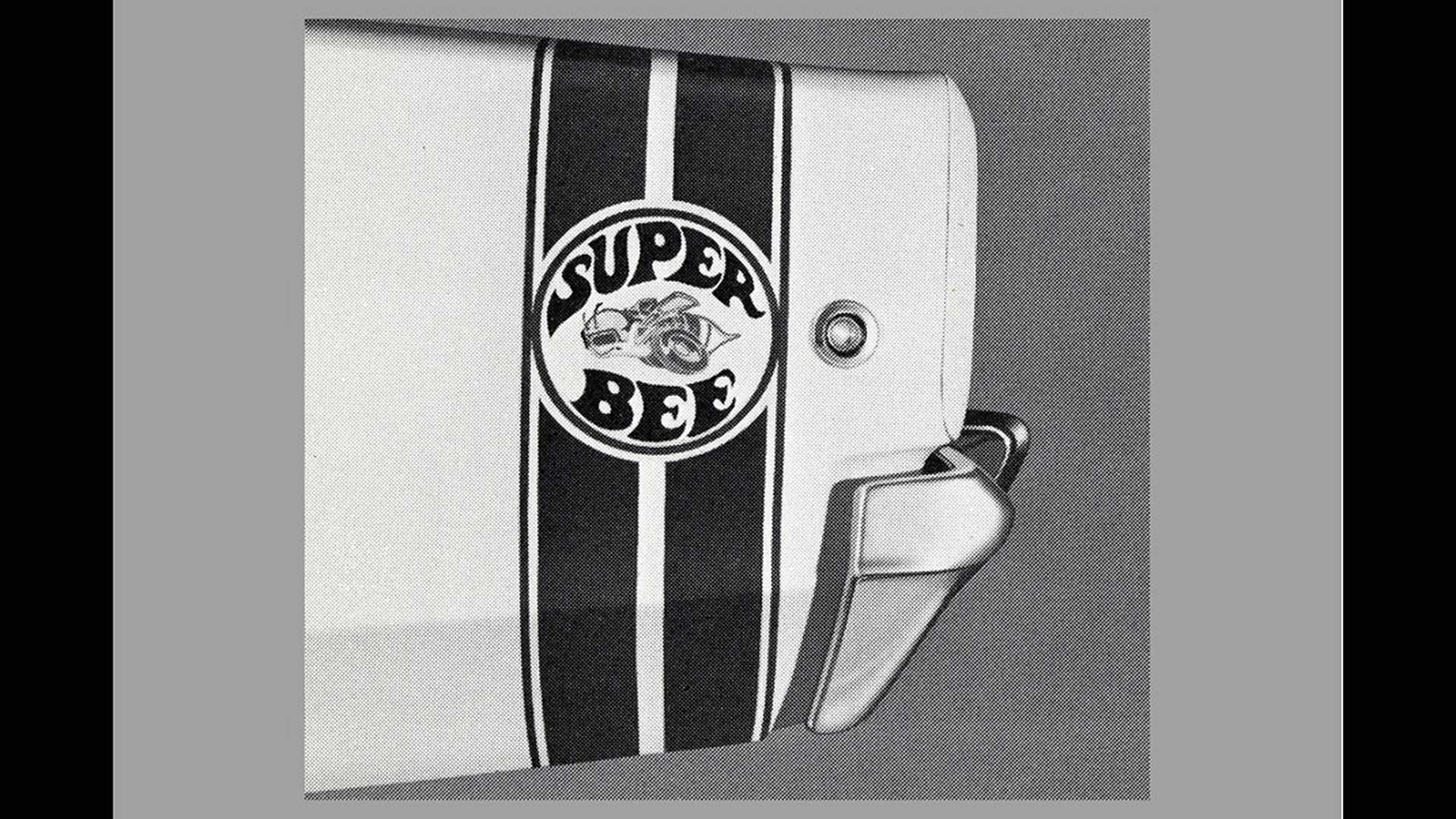
1968 Super Bee
© StellantisThe Super Bee model was added to the 1968 Scat Pack midyear. It was built on a Coronet body and the standard engine came from its Plymouth Road Runner cousin, a 335-horsepower, 383 cubic-inch V8. The 426 Hemi could be ordered, but it raised the car’s price by nearly one third.
Heavy-duty suspension was standard, along with bigger brakes and a four-speed manual transmission with a Hurst shifter and linkage.
-
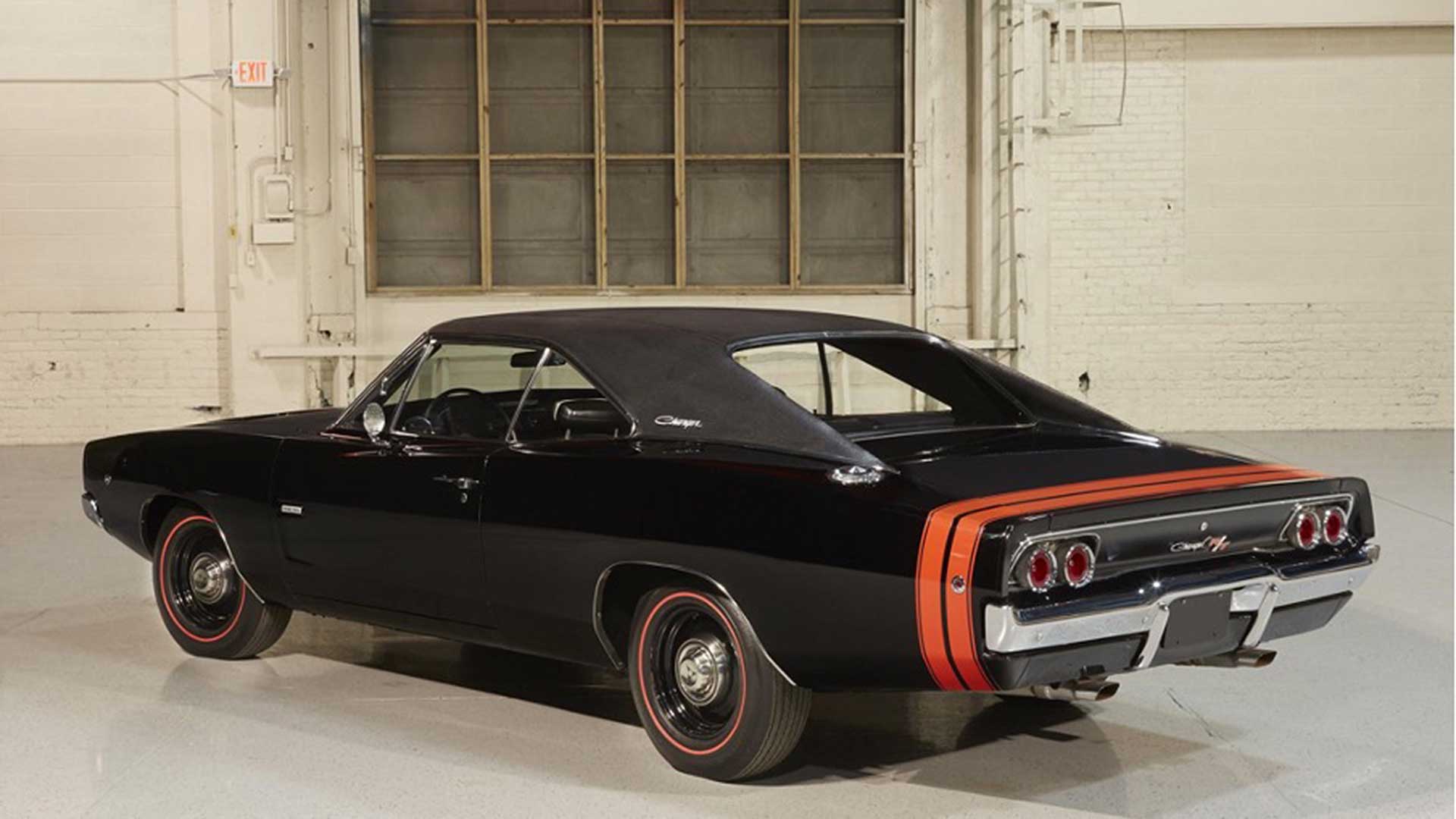
1968 Charger R/T
© StellantisThe ‘68 Charger is THE iconic muscle car, and the mere mention of the R/T version will bring original owners to tears. While the base model plodded along with a standard 318 poly (polyspherical head) V8, the R/T had a 440 Magnum under the hood.
-
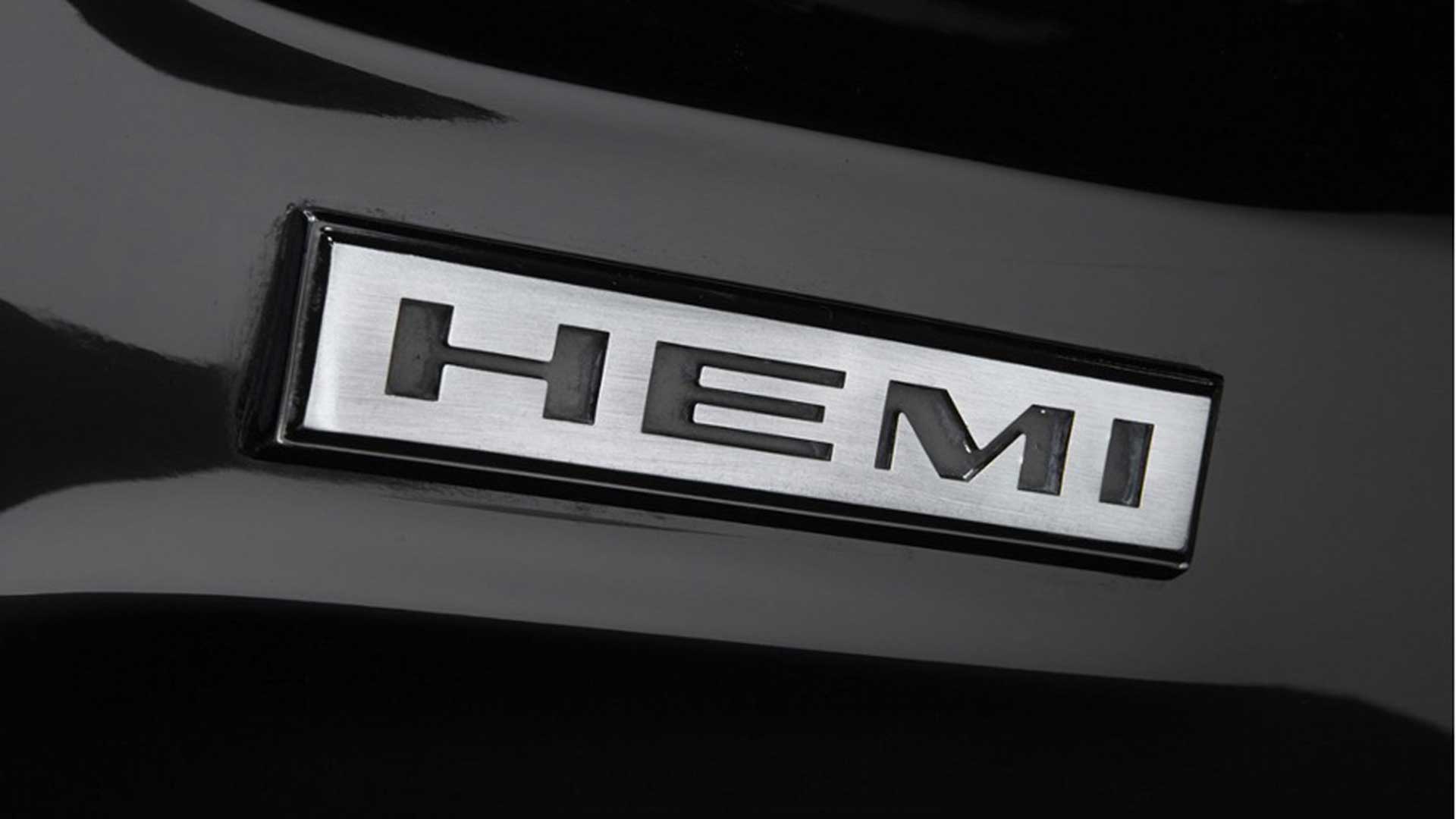
1968 Charger R/T Hemi Emblem
© StellantisAnd yes, 426 Hemi.
-
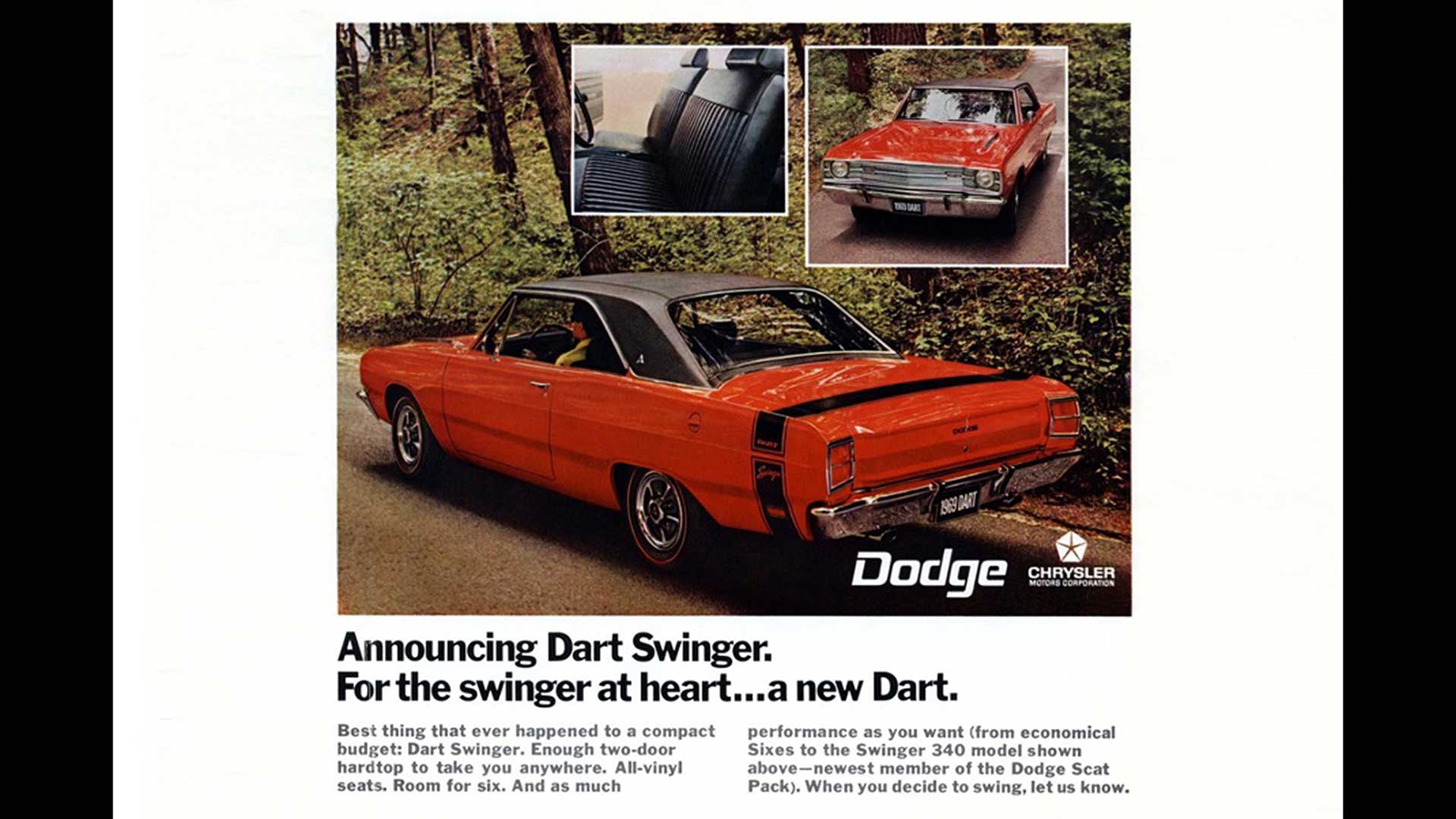
1969 Dart Swinger 340
© StellantisThe GTS was introduced in 1967 and carried the Dart performance flag, but it was not cheap. In 1969, Dodge offered an alternative that still promised performance: the Swinger 340. It was the base model hardtop coupe with flashy stripes and a not-so-subtle hood bulge treatment. A dual exhaust peeked out from under the rear bumper, and a heavy-duty limited-slip differential kept the power flowing to the ground.
Under the hood was the common 318, bored out to 340 and heavily reworked to increase usable rpm. It featured an aggressive cam, a forged crank, forged pistons, and heavy-duty connecting rods. Horsepower was 275, torque was 340 lb-ft; both numbers are said to be low
And then there was the advertising: “When you decide to swing, let us know.” Thanks, Dodge.
-
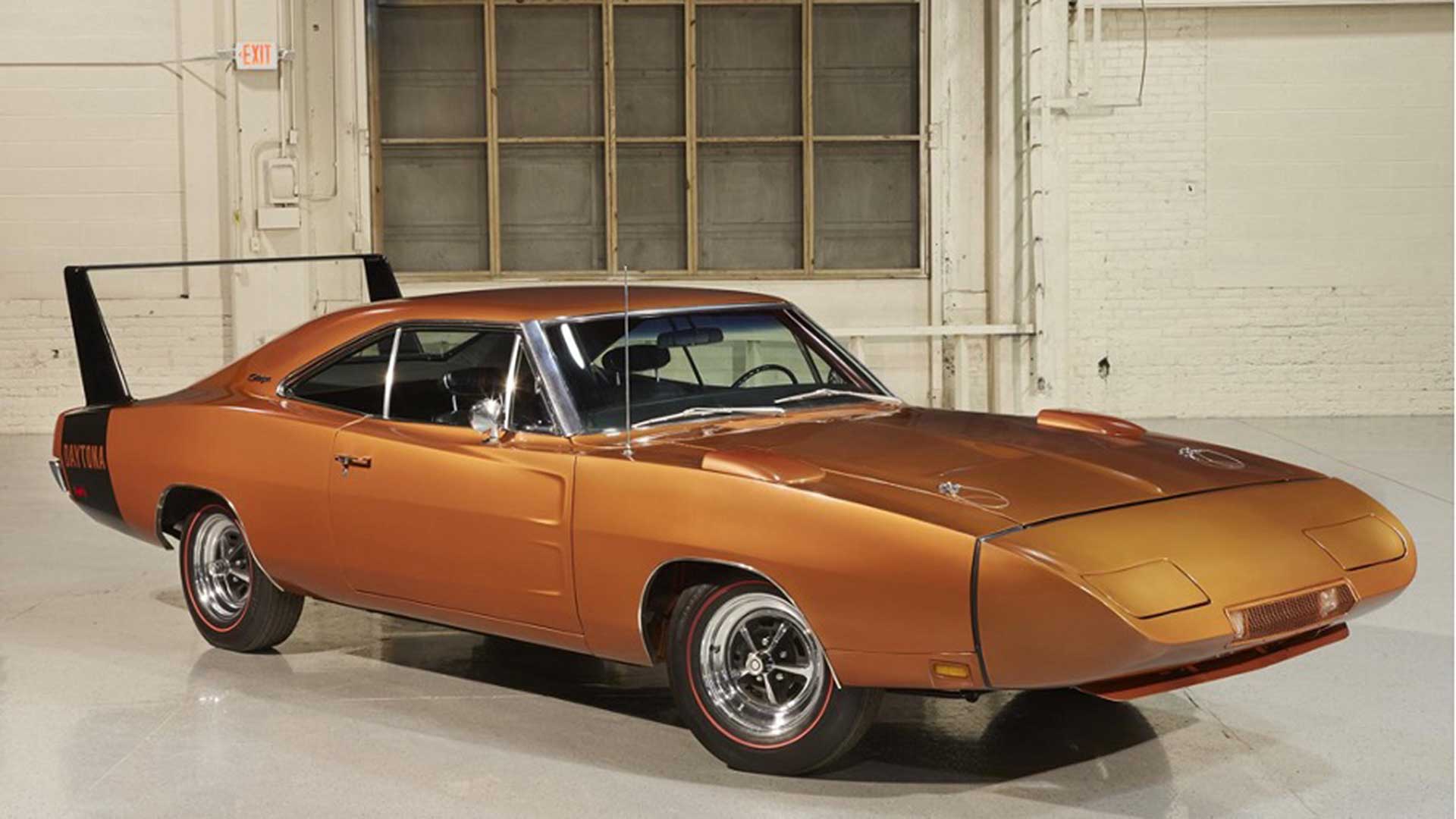
1969 Charger Daytona
© StellantisOne of the most famous Dodges in history, the Charger Daytona was created in the Summer of ‘69 as a NASCAR homologation special. It was created out of the Charger R/T and carried its heavy-duty brakes, suspension, and 440 Magnum engine as standard. Seventy of the 503 made had a the optional 426 Hemi under the hood.
The nose cone, wing, and other body modifications helped make the Daytona slippery enough to be the first car to pass the 200 mph mark in a sanctioned NASCAR race in 1970.
-
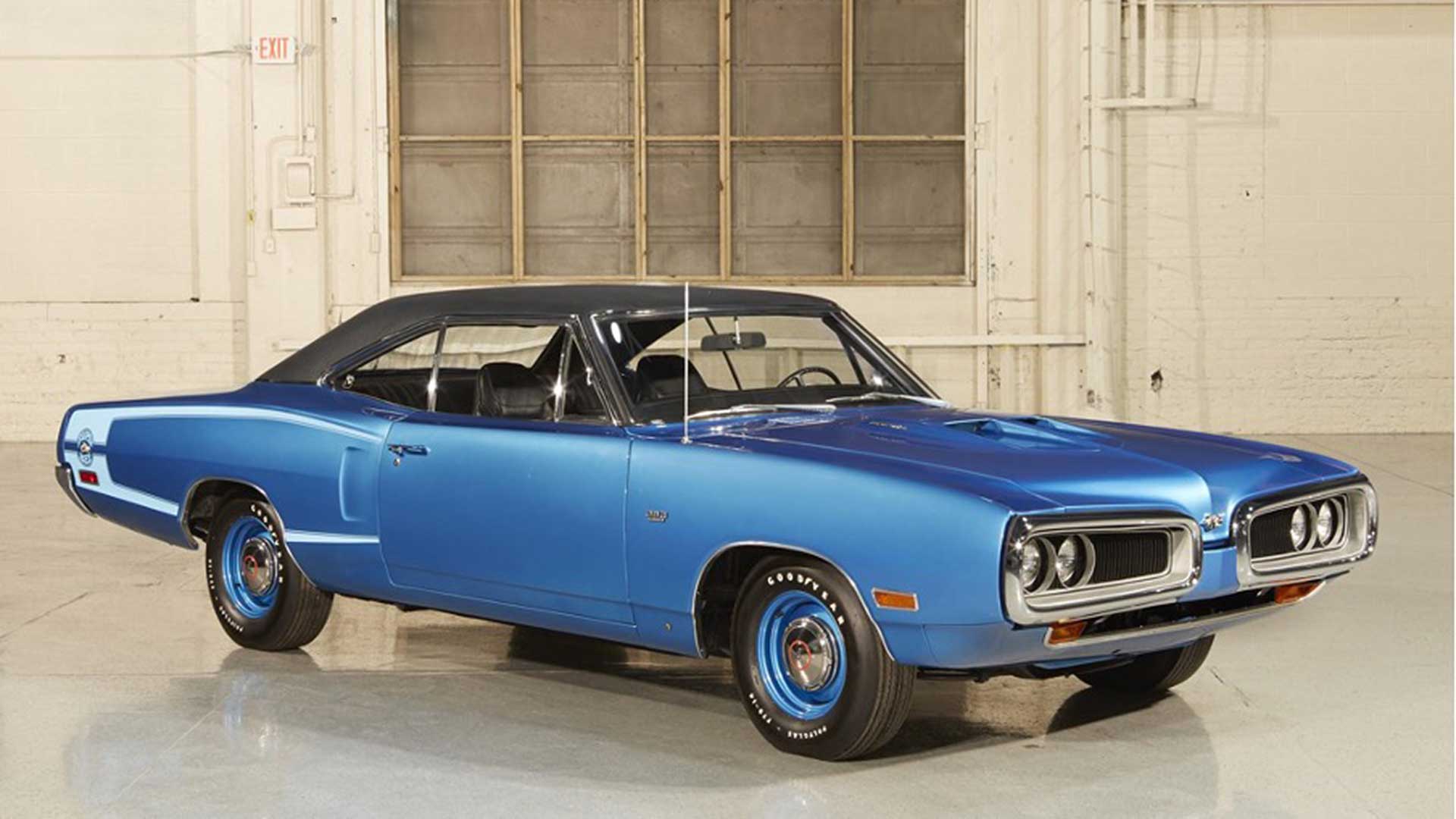
1970 Super Bee
© StellantisA minor restyling for 1970 gave the Super Bee its iconic “bumblebee wings” twin grille and optional C-stripe on the rear quarters, and created a now-coveted piece of Dodge muscle history.
There were three engine choices for the Bee: the 383 Magnum had a hot cam and provided 335 horsepower for relatively low bucks; the famous 440 six-pack that sported three two-barrel carbs, improved for 1970 with balancing, heavier rods and and an extra-heavy-duty crank; and the coveted 426 Hemi.
-
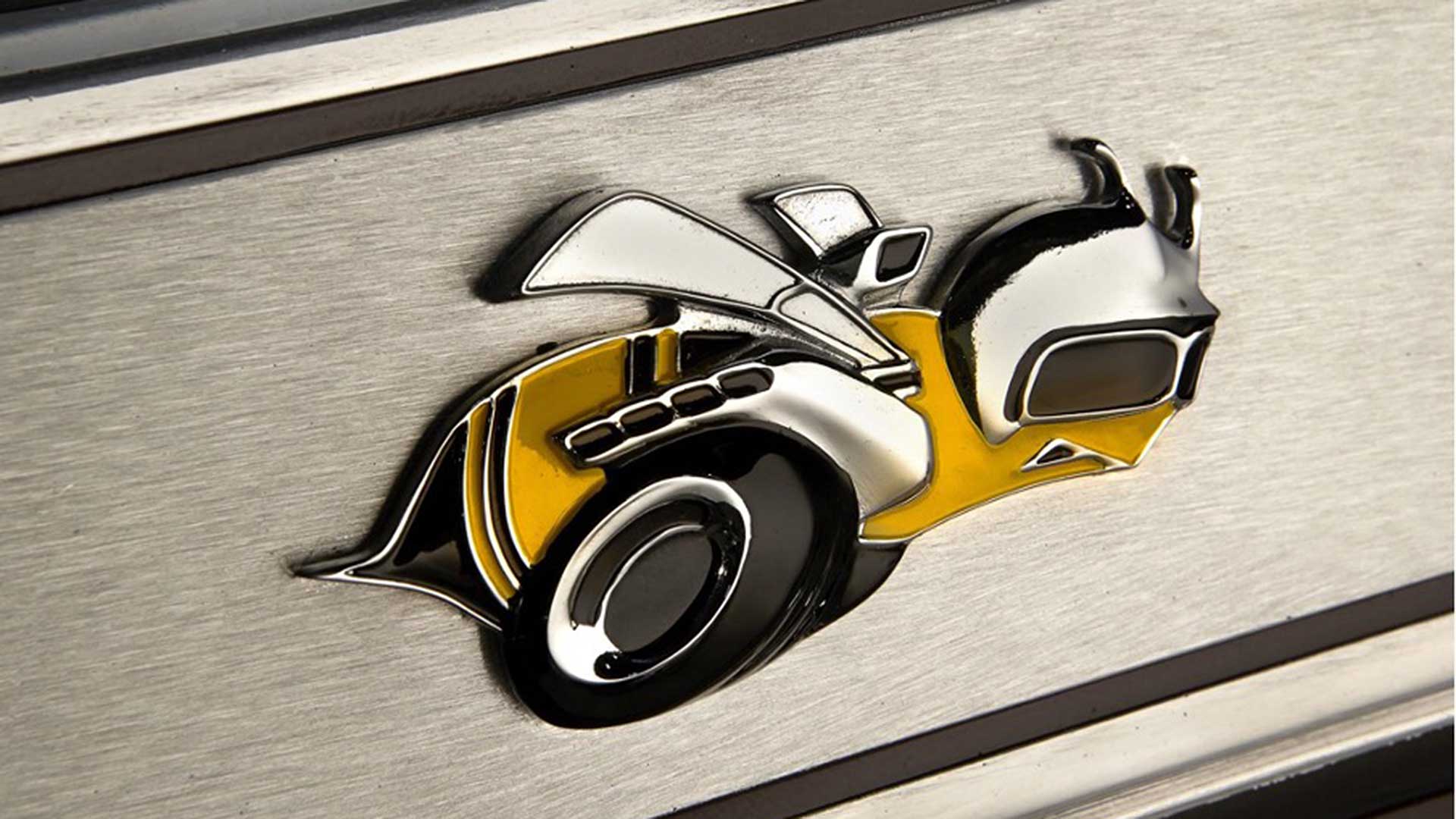
1970 Super Bee Emblem
© Stellantis1970 was the last year the Super Bee would be based on the Coronet. In 1971, it was downgraded to a Charger option package.
1970 was also the high water mark of the muscle car era. By this time in history, insurance companies were campaigning loudly against high horsepower cars. The war in Vietnam and heavy federal spending were pushing the country towards a recession, ending the appetite for expensive engine options.
-
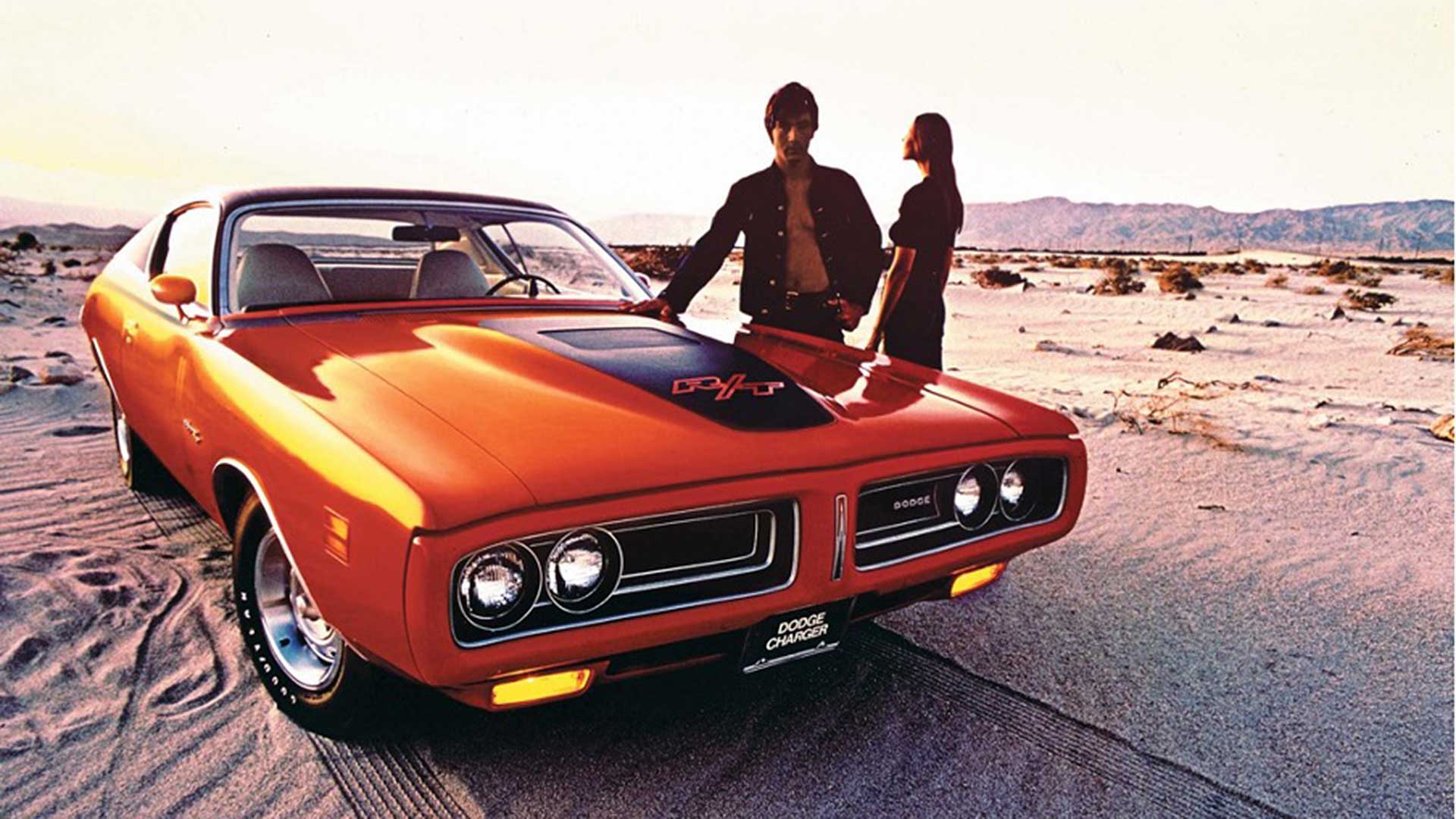
1971 Charger R/T
© StellantisThe Charger was completely redesigned for 1971, but engine choices remained largely the same across the model range, familiars like the 318, 340, 383 Magnum, 440 Magnum, 440 Six-Pack, and 426 Hemi. Like previous years, the R/T came standard with the 440 Magnum, with the option of the 426 Hemi.
1971 was the last year of the 426 Hemi and 440 Six-Pack. The 440 Magnum would still be offered, but would be detuned to 330 horsepower.
-
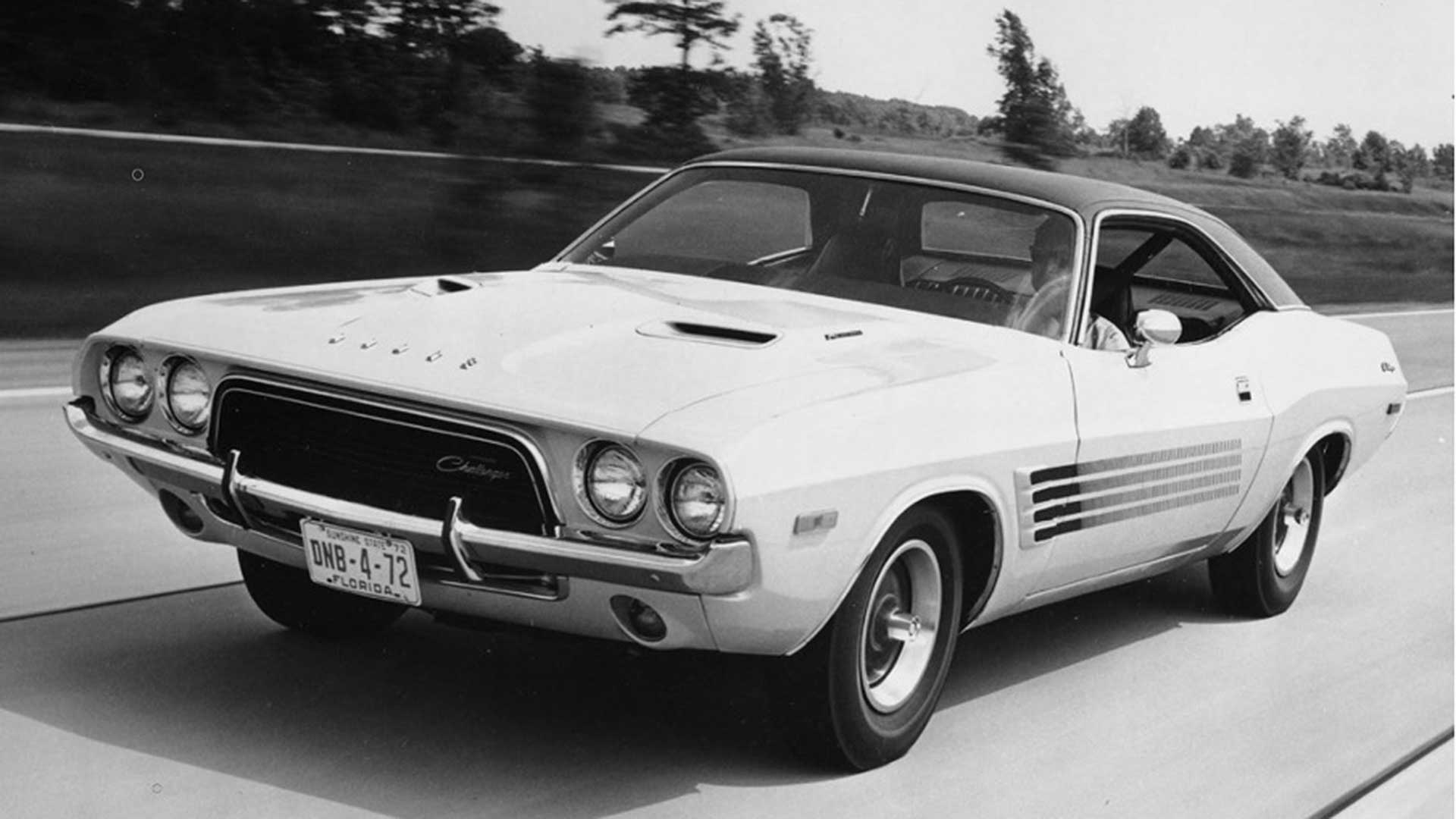
1972 Challenger
© StellantisWhen it was introduced in 1970, the all-new Dodge Challenger offered myriad engine choices, from a frugal six-cylinder to the elephantine 426 Hemi. However, by 1972 things were looking grim. The hottest motor available was the 340, but it had been detuned to meet emissions regulations. Horsepower was down to 240.
-
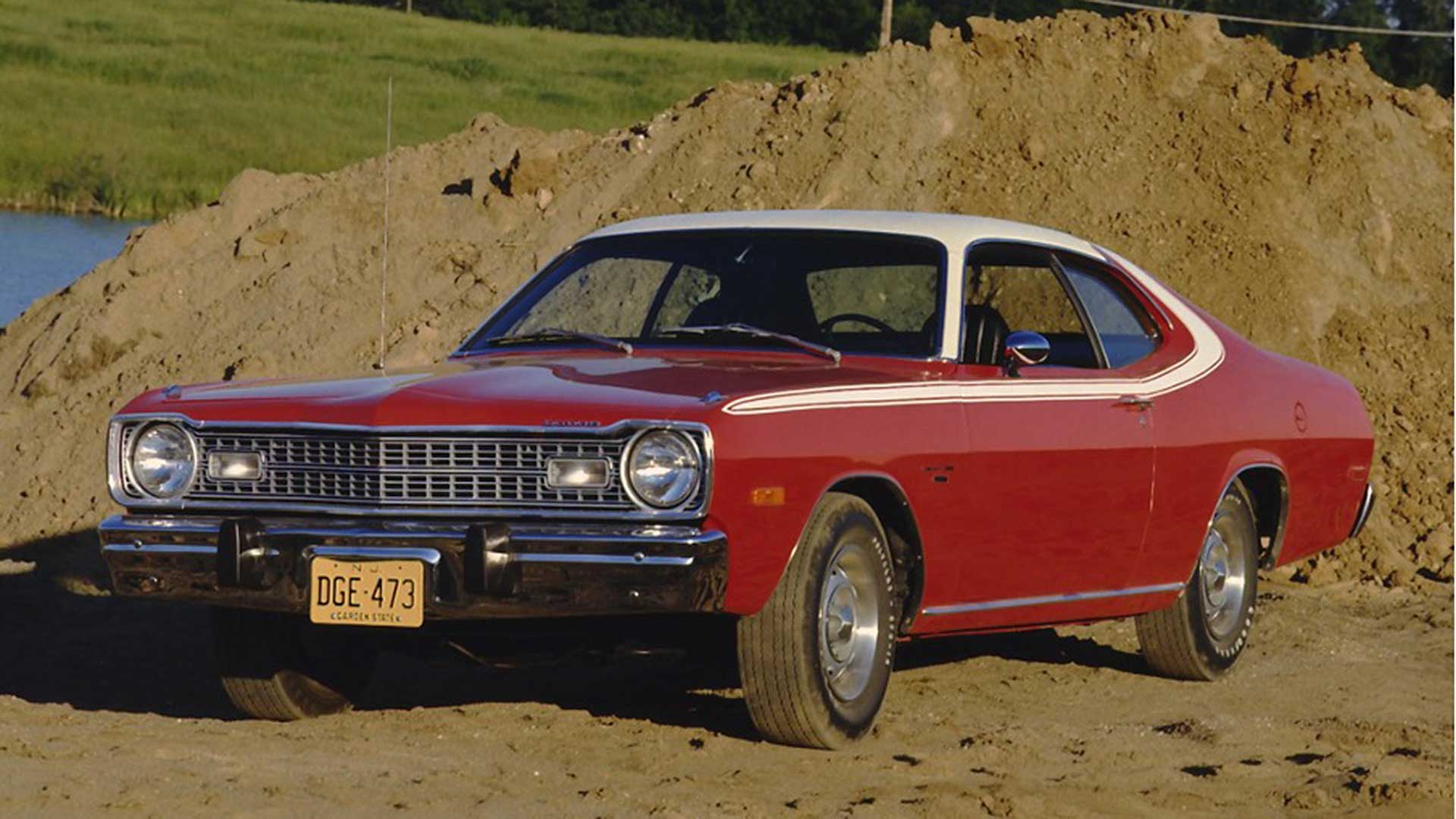
1973 Dart Sport
© StellantisIn response to complaints from fearful Christian groups, the 1970-72 Dodge Demon was renamed the Dart Sport for 1973. A relatively light curb weight of 3,200 pounds meant that with the 240-horsepower 340, the Sport was quite a performer for the year.
The muscle car continued its decline due to outside pressures. The stock market began a seemingly-endless downturn in January of 1973, resulting in the Dow Jones Industrial Average losing 45 percent of its value by the end of 1974. October of ‘73 also saw the beginning of the first oil crisis. At the beginning of the month, a barrel of oil cost $2.90. By January of ‘74, the price had risen to $11.65.
-
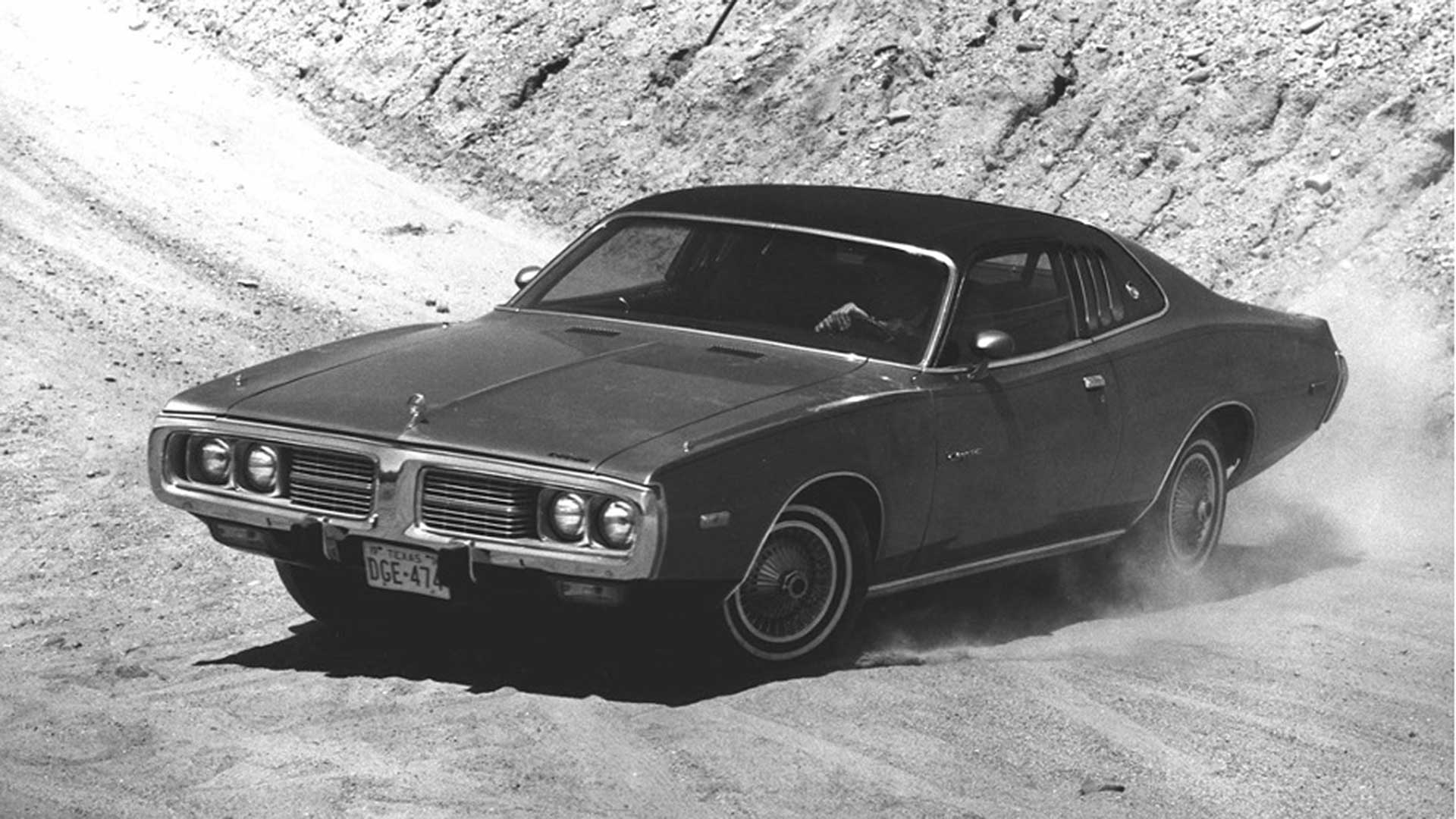
1974 Charger SE
© StellantisBare-bones 1974 Chargers were offered with a fuel-efficient six-cylinder motor, good for 105 horsepower. Things looked better on the top-of-the-line SE model: the 318 was standard, but it only put out 150 horses. High-performance engines were still on the options list, though: a 245-horsepower 360, a 250-horsepower 400, and the 275-horsepower 440.
‘74 was the last year of the third-generation Charger, and sales were dismal.
The muscle car era came to a close.